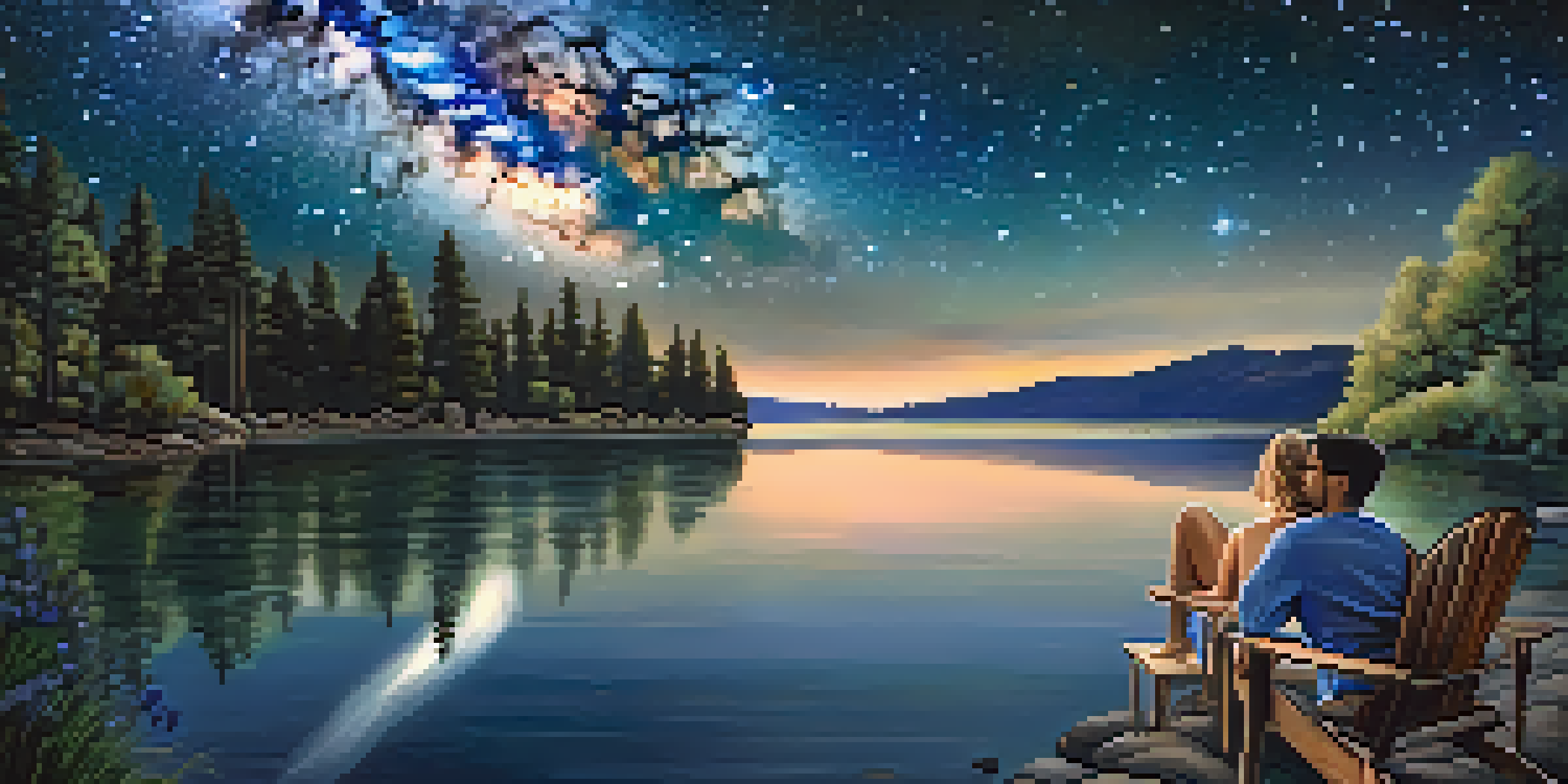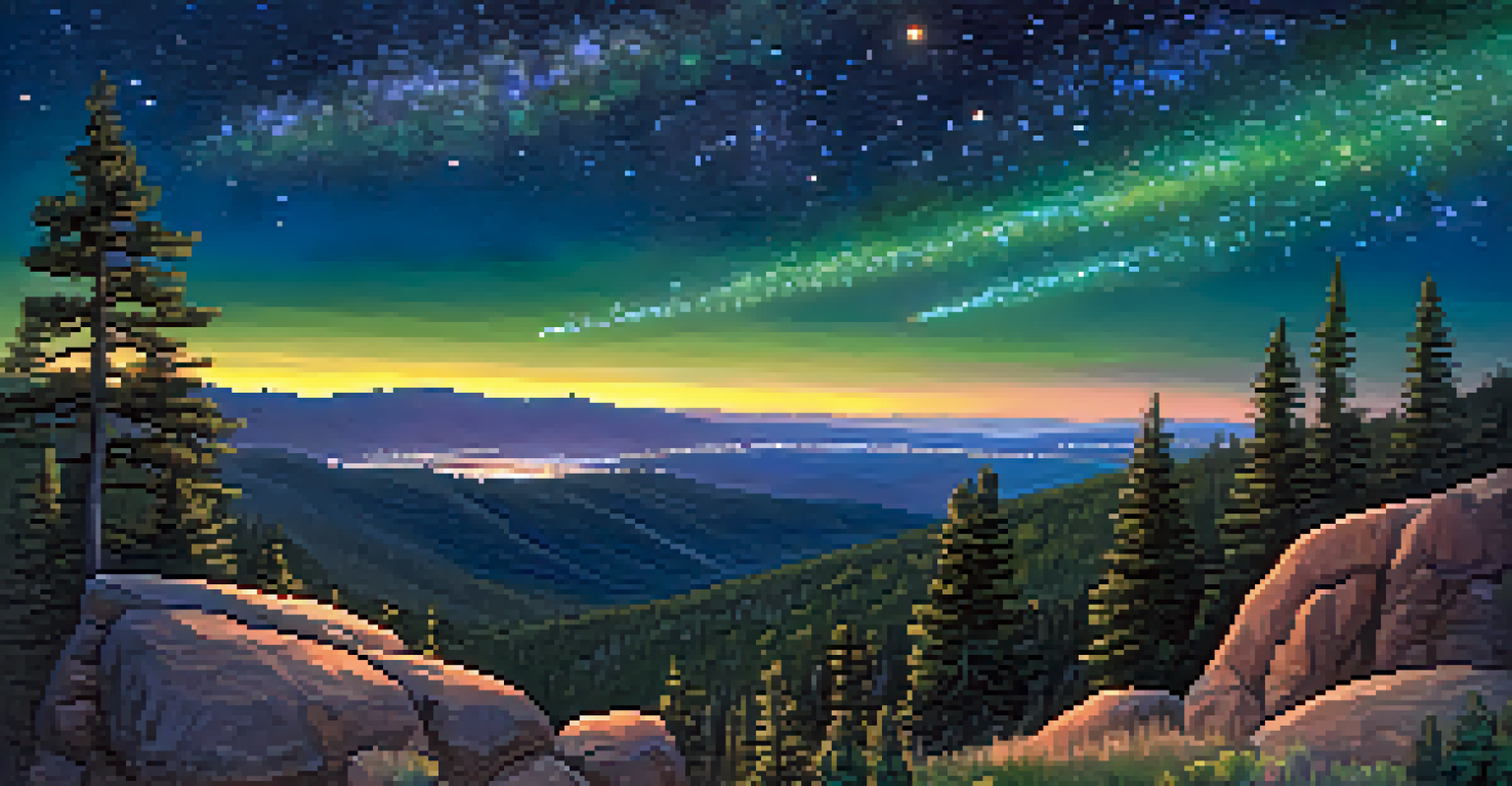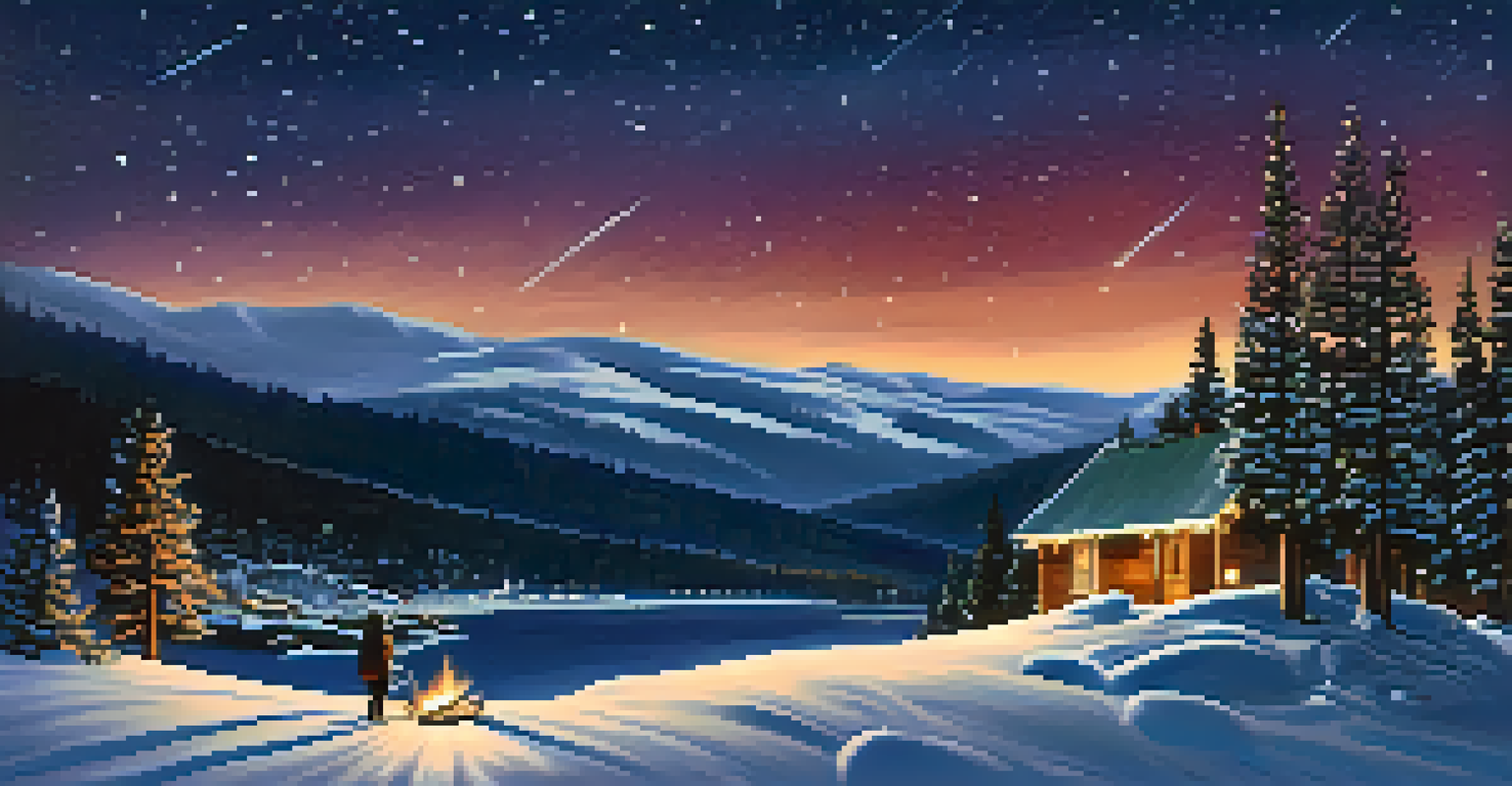Best Times of Year for Stargazing in Big Bear, California

Why Big Bear is a Stargazer's Paradise
Nestled in the San Bernardino Mountains, Big Bear, California, is a hidden gem for stargazers. With its high elevation and clear skies, this area offers some of the best views of the night sky you can find. The low light pollution makes it easier to see stars, planets, and even the Milky Way in all its glory.
To confine our attention to terrestrial matters would be to limit the human spirit.
Imagine lying on a blanket under a blanket of stars, the crisp mountain air filling your lungs. Whether you're a seasoned astronomer or a curious novice, Big Bear invites you to explore the cosmos. The beauty of the night sky here creates a perfect backdrop for unforgettable memories.
As we dive into the best times of year for stargazing, you'll discover the unique experiences each season brings. From meteor showers to celestial events, there's something magical waiting for you in the skies above Big Bear.
Spring: A Season of Renewal and Celestial Wonders
Spring in Big Bear is a breathtaking time, marked by blooming wildflowers and clear skies. As the temperatures begin to rise, you'll find more comfortable nights ideal for stargazing. March and April are particularly favorable for spotting constellations like Orion and Canis Major.

Keep an eye out for the Lyrid meteor shower in mid-April, which can produce up to 20 meteors per hour. Imagine standing in the cool spring air, watching streaks of light dance across the sky. This season offers a wonderful blend of natural beauty and cosmic activity.
Big Bear: A Stargazing Haven
With its high elevation and minimal light pollution, Big Bear offers stunning views of the cosmos throughout the year.
As you venture out, don’t forget to bring a warm blanket and perhaps a cup of hot cocoa to sip while you gaze upward. Spring's charm enhances the stargazing experience, making it a delightful time to connect with the universe.
Summer: The Peak of Stargazing Season
Summer is often regarded as the peak season for stargazing in Big Bear, and for good reason. Longer days give way to warm nights, perfect for outdoor adventures that stretch into the evening. The clear skies during this time are ideal for witnessing spectacular astronomical events.
The cosmos is within us. We are made of star-stuff. We are a way for the universe to know itself.
One of the highlights of summer is the Perseid meteor shower, peaking around mid-August. With up to 60 meteors an hour, it’s a thrilling sight that draws star enthusiasts from all over. Picture yourself lying on a hillside, surrounded by friends, as shooting stars zip overhead.
Summer also offers opportunities to view planets like Jupiter and Saturn, which are especially prominent. The combination of warm weather and vibrant night skies makes summer an enchanting time to explore the celestial wonders above Big Bear.
Fall: Crisp Air and Stunning Constellations
As the leaves change color and the air turns crisp, fall offers its own unique stargazing experience in Big Bear. October is particularly special, as the nights grow longer and the skies become even clearer. This is the perfect time to observe constellations like Cassiopeia and Andromeda.
Don't miss the Orionid meteor shower in late October, which can surprise you with its bright meteors streaking across the sky. The cool autumn air adds a refreshing touch to your stargazing sessions, allowing you to appreciate the beauty of the universe in comfort.
Seasonal Stargazing Highlights
Each season in Big Bear presents unique celestial events, from meteor showers in spring and summer to clear winter skies.
Bring a cozy sweater and perhaps a pumpkin-spiced treat to enjoy as you gaze at the stars. Fall not only enchants with its colors but also offers a fantastic opportunity for celestial viewing.
Winter: A Unique and Enchanting Stargazing Experience
Winter in Big Bear transforms the landscape into a snowy wonderland, creating a magical backdrop for stargazing. The cold, crisp air often results in clearer skies, making it an excellent time for celestial observations. December and January are particularly great months to catch stunning views of the night sky.
The Geminid meteor shower, peaking in mid-December, is one of the most spectacular events of the year, with bright, colorful meteors. Imagine standing in a serene winter landscape, snow crunching underfoot, while shooting stars light up the sky. It’s an experience that feels like stepping into a dream.
Don’t forget to bundle up, and maybe enjoy some hot cider as you take in the beauty of the cosmos. Winter stargazing offers a unique charm that can make your experience even more memorable.
Best Stargazing Spots in Big Bear
Finding the perfect spot to stargaze can make all the difference in your experience. Big Bear has numerous locations that offer expansive views of the night sky, free from light pollution. Some popular spots include the Big Bear Lake Observatory and the Moonridge Animal Park.
Another favorite is the top of Snow Summit, which provides a breathtaking vantage point. Just imagine standing at a height where the stars feel almost within reach, with the lake shimmering below. These locations not only enhance visibility but also create a magical atmosphere.
Tips for an Enjoyable Experience
Preparing for stargazing with the right gear, warm clothing, and utilizing stargazing apps can enhance your experience under the stars.
Don’t forget to check local regulations and accessibility before heading out, especially if you plan on visiting more remote areas. Each spot has its own charm, so exploring different locations can lead to delightful discoveries.
Tips for an Enjoyable Stargazing Experience
To make the most of your stargazing adventure, a few simple tips can enhance your experience. Start by checking the weather forecast to ensure clear skies, as clouds can obscure your view of the stars. Bringing binoculars or a telescope can also provide a closer look at celestial objects.
Don’t forget to dress warmly, as temperatures can drop significantly at night in the mountains. Layer your clothing and pack blankets for added comfort while lying back to gaze at the stars. Snacks and drinks can also make your stargazing session more enjoyable.

Lastly, consider downloading stargazing apps that help identify constellations and celestial events. These tools can turn your night under the stars into an interactive journey through the universe.
Plan Your Stargazing Trip to Big Bear
Planning your stargazing trip to Big Bear is as exciting as the experience itself. Start by selecting the best time of year based on the celestial events you want to witness. Whether it’s the meteor showers of summer or the serene winter skies, each season offers unique opportunities.
Consider booking accommodations in advance, especially during peak seasons when visitors flock to the area. Staying overnight not only allows for multiple nights of stargazing but also lets you enjoy the beauty of Big Bear during the day.
Lastly, check local events or stargazing gatherings, as these can enhance your experience. Joining fellow enthusiasts can lead to valuable tips, shared experiences, and a deeper appreciation for the awe-inspiring cosmos.